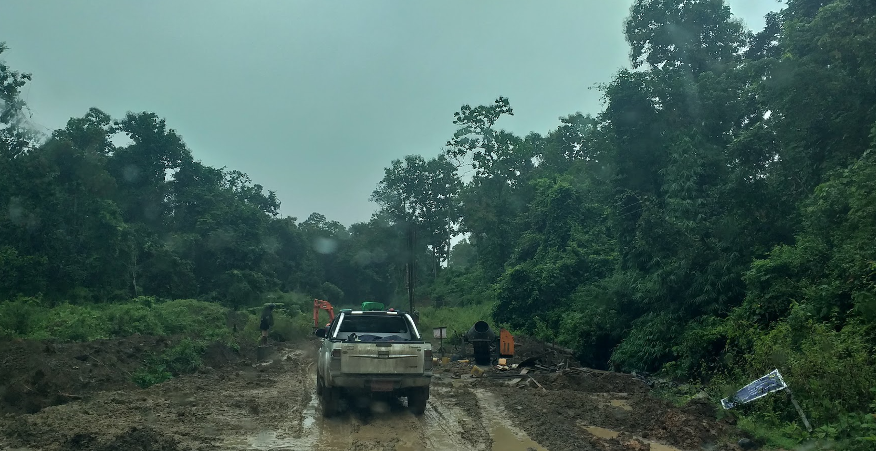
Introduction
In the northeastern part of Myanmar, a place where the ongoing violence and conflict are still present, an extraordinary group of volunteers emerged as a beacon of hope. Despite the communication, transportation and challenges such as own trauma, these volunteer leaders have taken the role of providing the Mental Health Psychosocial Support (MHPSS) to the community. Their strong support networks have become a lifeline for the survivors of violence in the face of the resource limitations and ongoing security challenges.
This article highlights the inspiring stories of the community leaders who have performed the transformative movement through the peer support, shared coping strategies and resilience. Their stories shed a light on the hope and the power of human connection and the profound impact at the grassroot level amidst of the crisis.
The Humanitarian Context
Northeastern part of Myanmar has been impacted by the ongoing violence and tension among various armed forces leaving the people with deep scars whereas most of the ethnic armed groups in that region has been present for over 50 years. Amongst the physical dangers, there is evidence of substantial increase in the mental health issues within the population, particularly in the conflict affected areas.
Despite the extensive need for mental health psychosocial support services among the people, the formal mental health services within the region are scarce. A combination of the limited health resources, infrastructure and a stigma towards the mental health has left many without professional care. Moreover, communication and transportation challenges make those who are in need more isolated.
In this challenging situation, a group of volunteer leaders has emerged to fill the gap. The volunteers include teachers, farmers, and village chiefs, who provide essential psychosocial support and emotional guidance, with technical assistance from the non-governmental organisations (NGOs). These grassroot efforts can not only provide the immediate psychological support but also can foster the community resilience.
Stories of Community Heroes
- A Teacher’s Resilience: Building a Safe Space for Children
Aye Lin*, a former schoolteacher, is the first to complete the MHPSS training. Witnessing the devastating effects of violence on the schoolchildren from her village, she provided emotional support through storytelling. She gathered the children under the tree and used her storytelling techniques to help the children to process fear and grief without the formal classroom. Integrated with the tools and techniques from her training, she helped to provide emotional support to rebuild a normalcy for the youngest survivors.
- A Survivor Helping Survivors: Peer Support in Action
Min Khant*, a farmer, experienced the loss of his wife during the conflict. After attending the peer support training, he turned his grief and pain into action to help those who experienced similar loss. He now travels to nearby different villages, organise support groups and facilitate the discussions together to share the experiences and coping strategies. This can not only provide the immediate psychological support but also create community bonds.
(*Names have been changed to protect their identities.)
Overcoming Challenges
Numerous challenges were identified during the provision of volunteer support services whereas the transportation is regarded as the major challenge. Because of the rugged terrain and conflict zones, the community leaders often face difficulty in travelling remote villages. Communication is another challenge since some of the areas have limited mobile connectivity. Additionally, the leaders have to balance the community work with their own trauma, which requires significant resilience. In spite of these difficulties, their dedication and resilience continue to inspire hope within the community.
The Impact
The efforts of the leaders created a transformative positive impact to the communities. Children who once cannot sleep because of the nightmares and anxiety can now sleep within the safe spaces created by Aye Lin. Meanwhile, Min Khant’s community outreach support has connected the isolated families to the essential resources, trust and community resilience. Their stories set as an example of the transformative power of grassroot efforts and human connection.
Conclusion and Call to Action
The endeavour of the community leaders acts as a foundation for the long-term recovery amidst the conflict and adversity. However, their work is far from complete. The challenges they have been facing highlight the need for support and investment in grassroots mental health initiatives. Governmental organisations, INGOs and international organisations must prioritise the MHPSS training to empower more leaders like this. By advocating and supporting the organisations working on the ground, we can contribute to sustaining their impactful work and fostering resilience in vulnerable communities.
About the Author: Dr. Tay Zar LIN, MD, a member of the British Psychological Society, is a healthcare consultant, doing Dr.PH course at the Faculty of Public Health, Chiang Mai University (Linkedin)
Competing interest: None
Handling Editor: Neha Faruqui